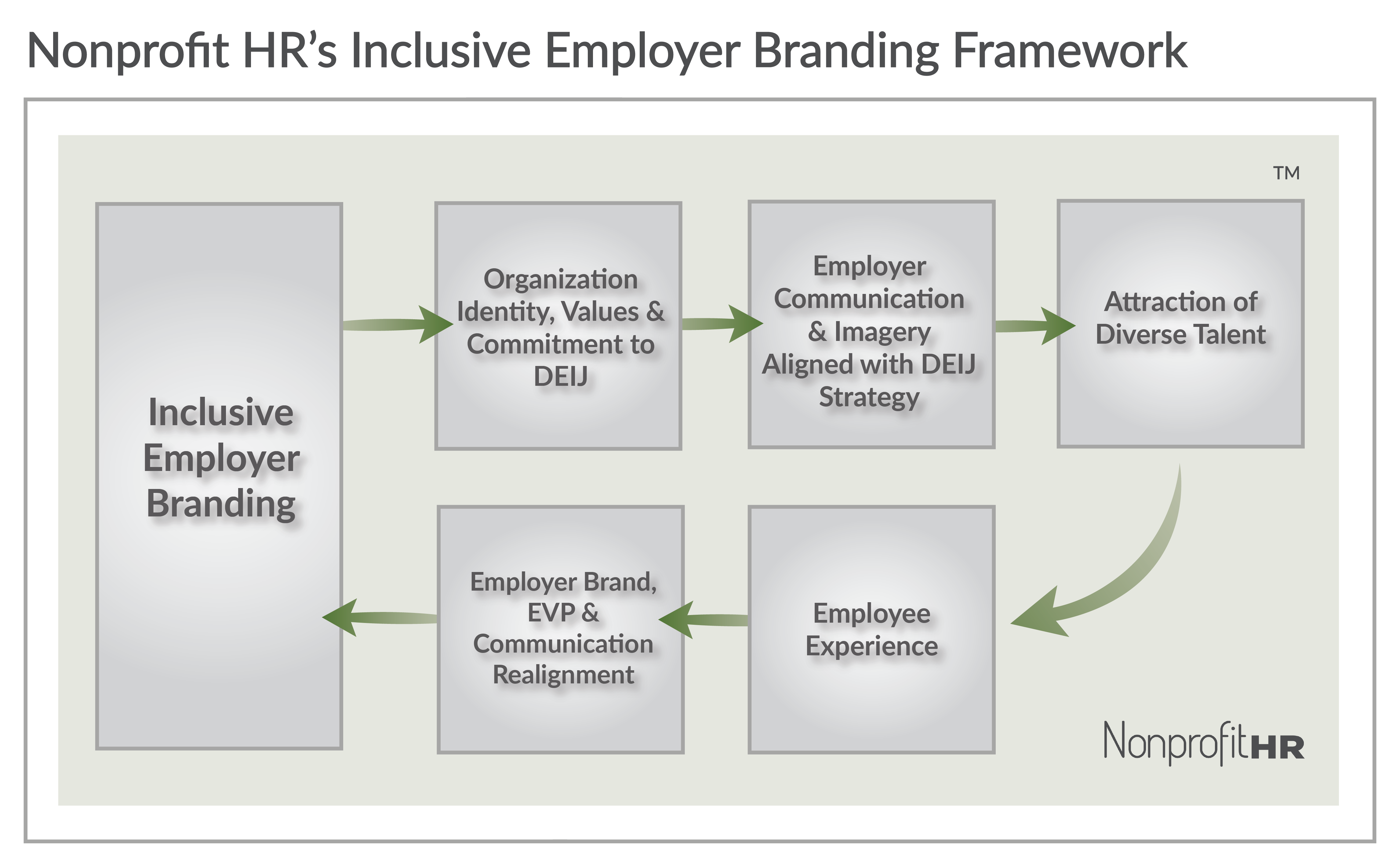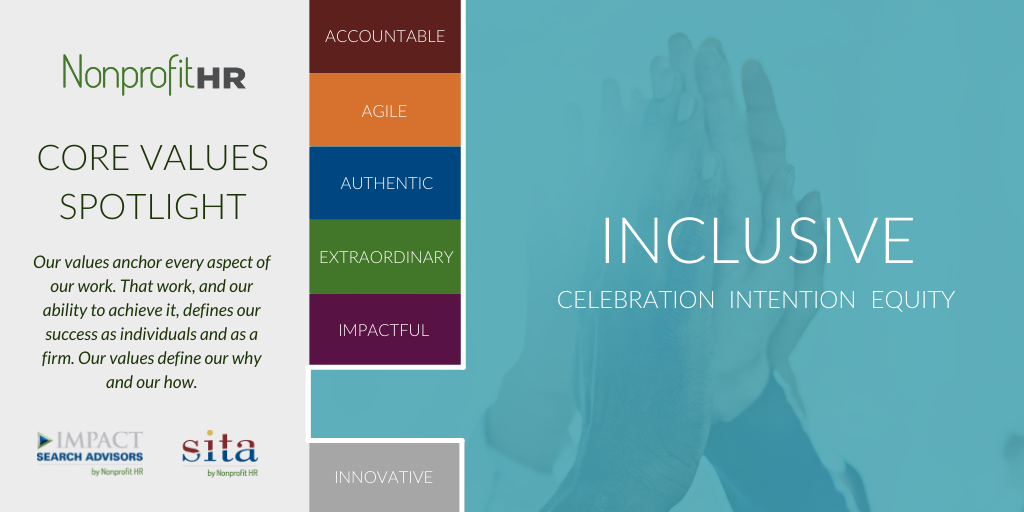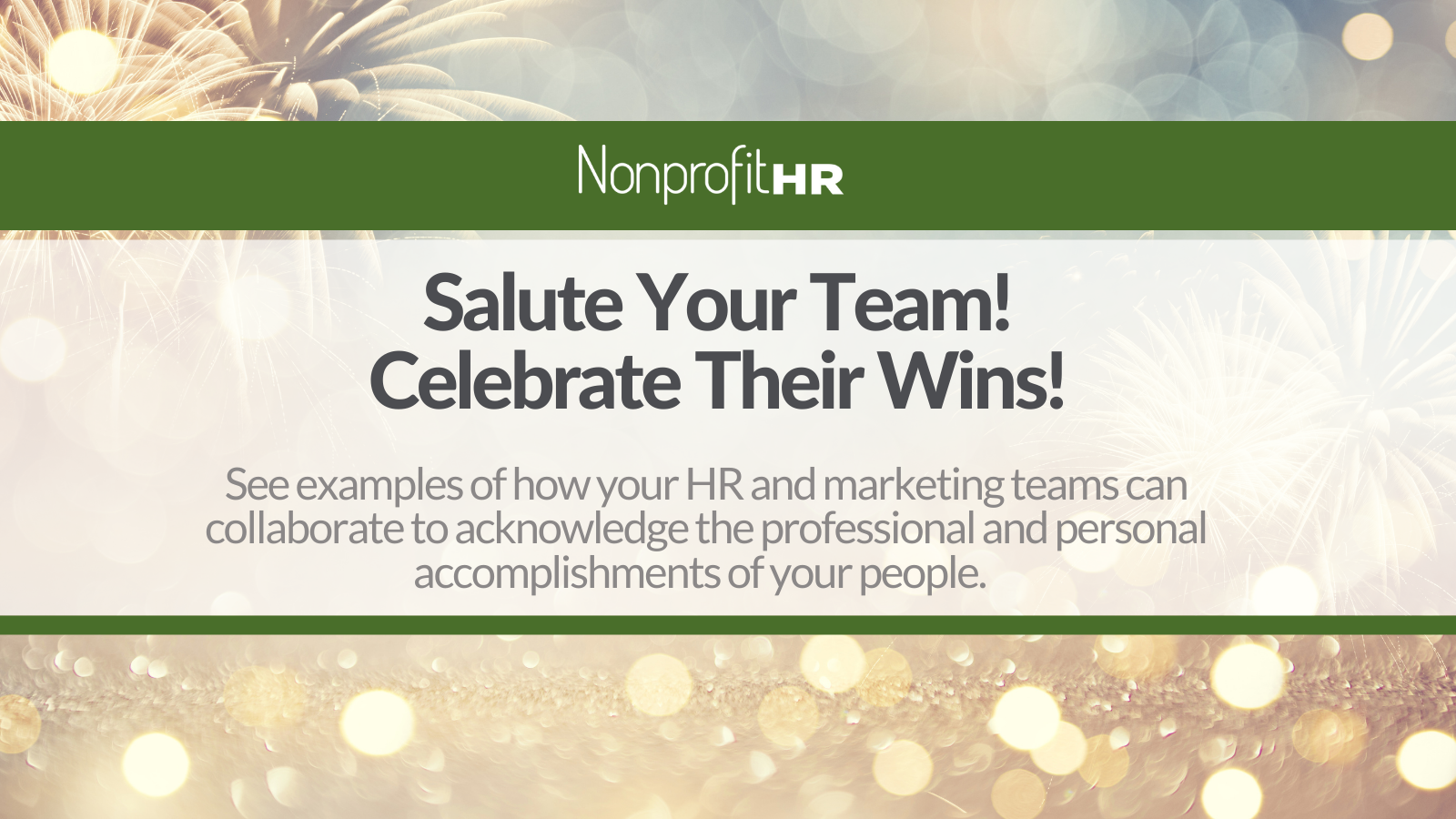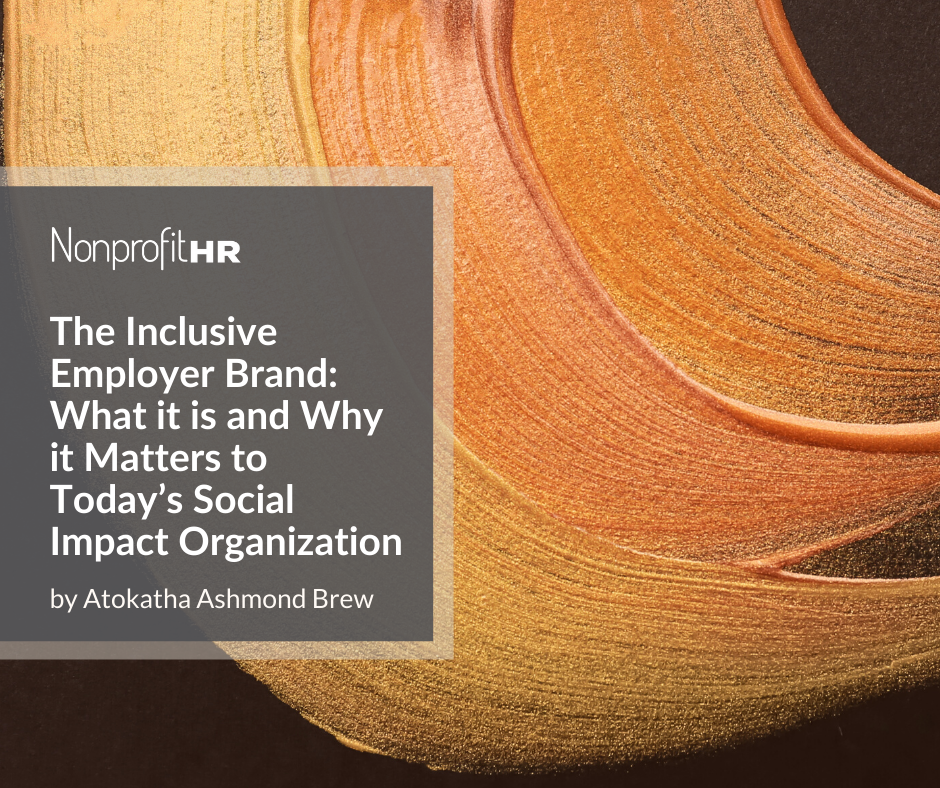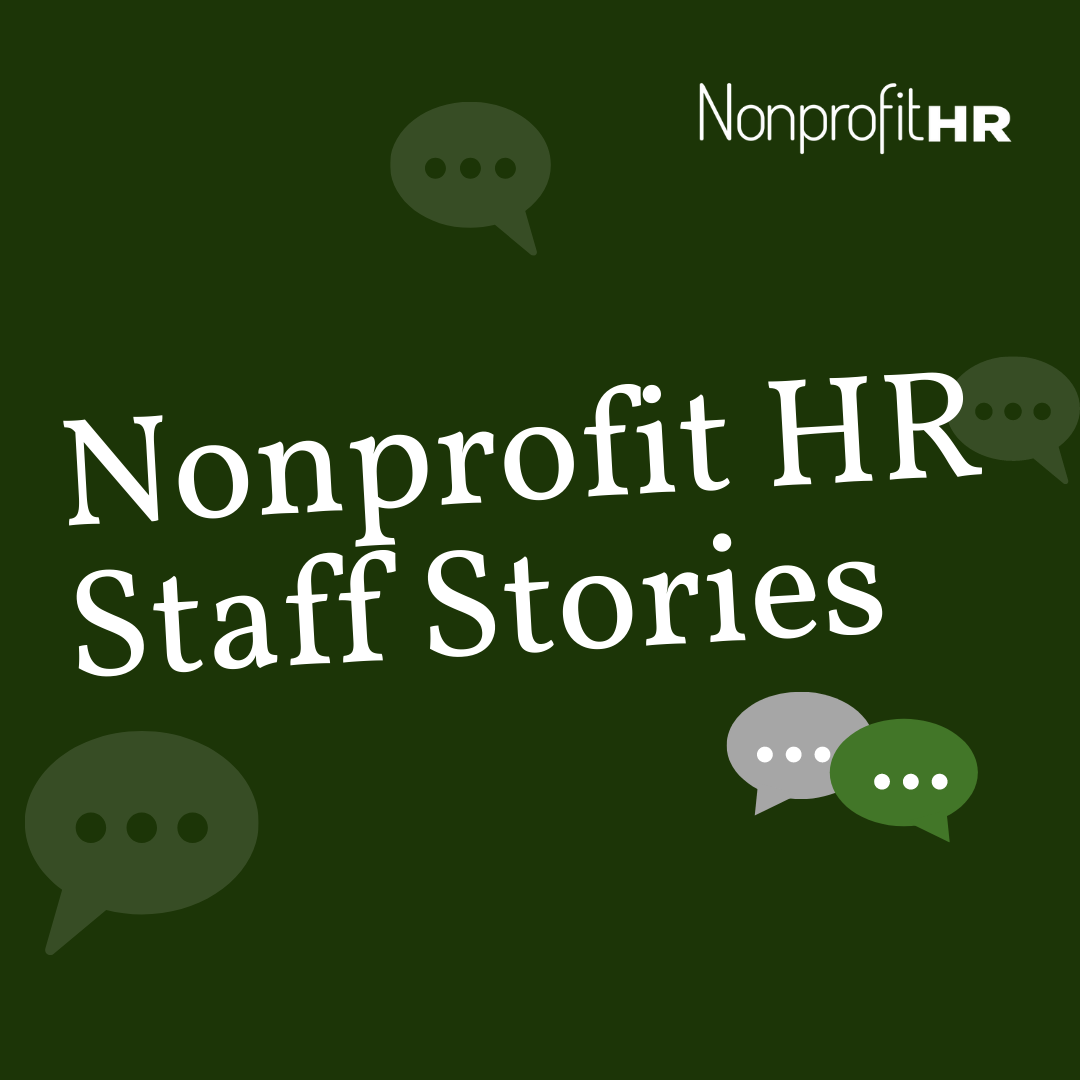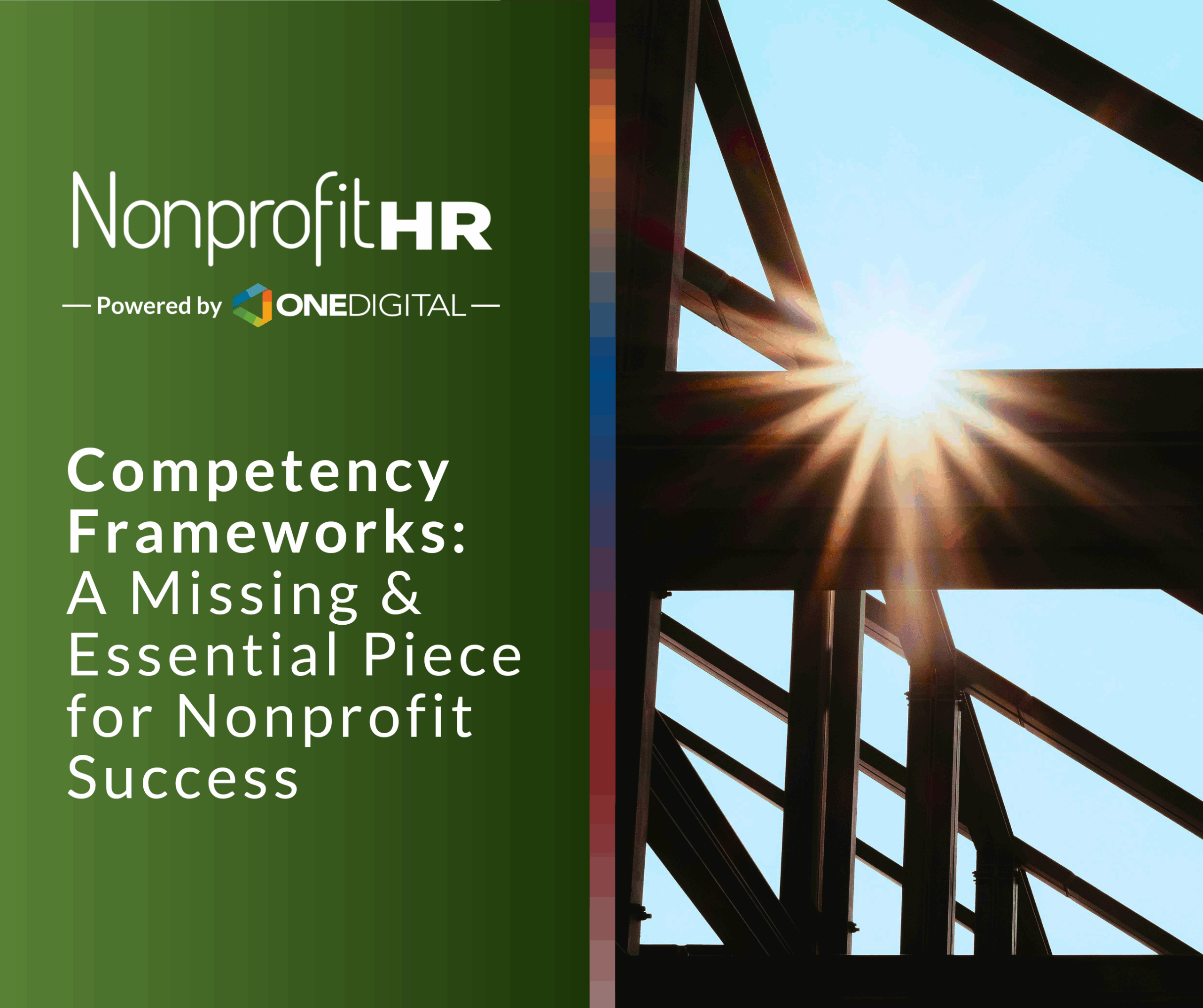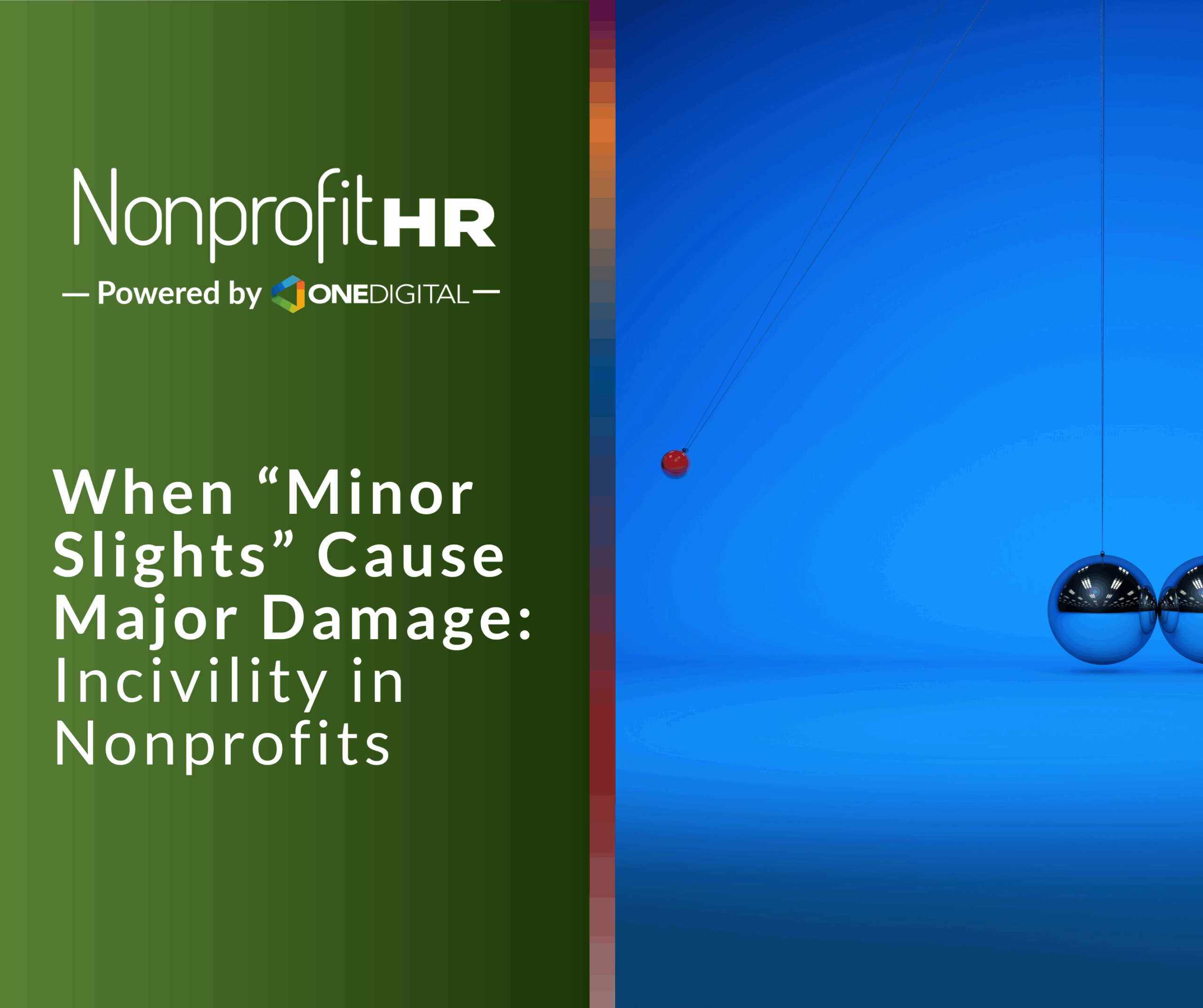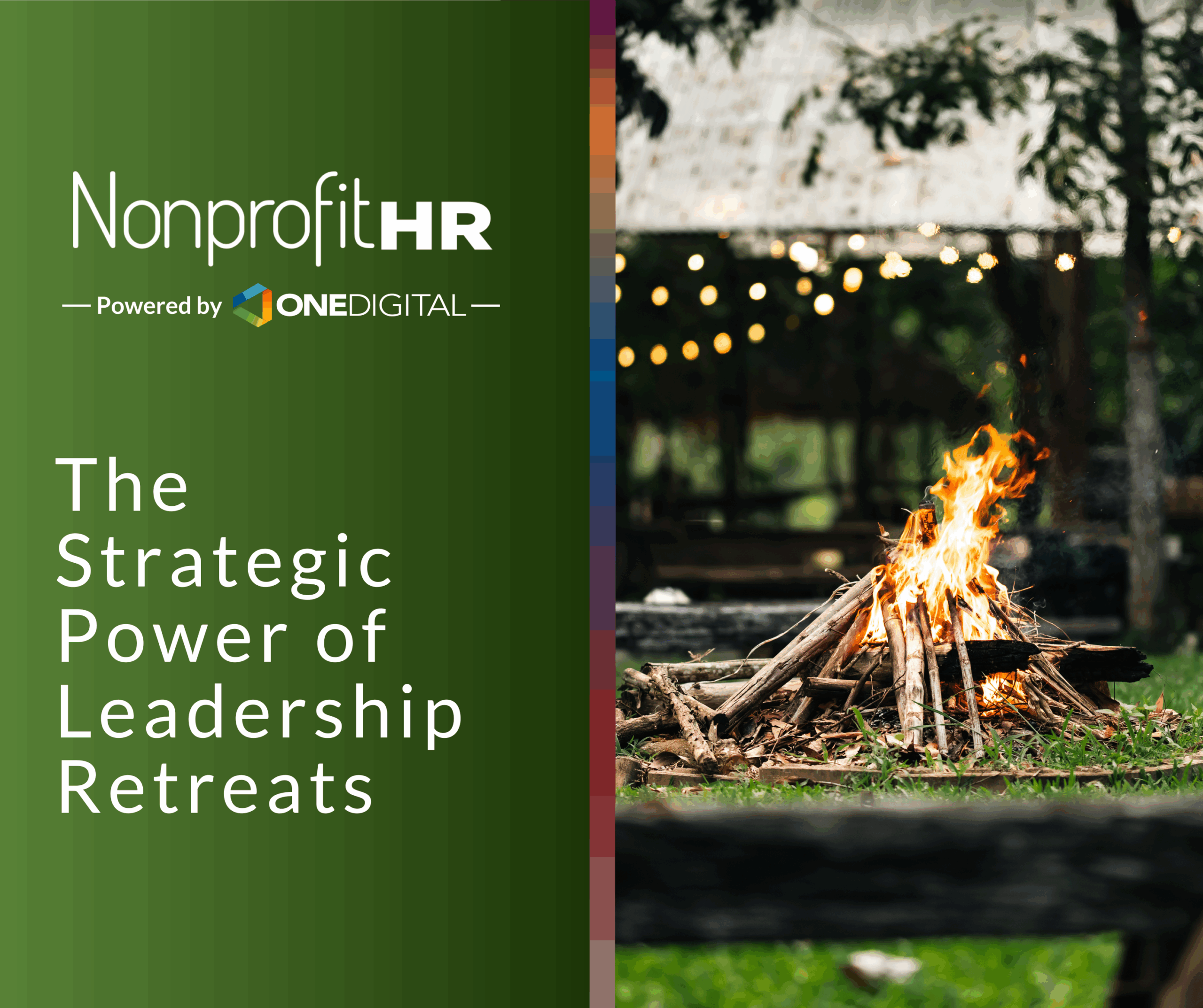WTOP: 5 ways nonprofits can…
What is an Inclusive Employer Brand?
At Nonprofit HR, we refer to racialequitytools.org’s definition for inclusion, which is “authentically bringing traditionally excluded individuals and/or groups into processes, activities, and decision/policy making in a way that shares power.” Therefore, an inclusive employer brand is a set of organizational values, standards, policies, practices and decisions that center inclusion in the employee experience at every level. It is cultivated through communication that actualizes an employer’s commitment to diversity, equity, inclusion and justice (DEIJ) and accurately describes employee experiences. It reinforces an employer’s commitment to ensuring every staff member feels a sense of belonging and engages in authentic ways. This type of communication includes everything from the messaging used in job descriptions to career and employee experience imagery. Lastly, inclusive employer brands must be created intentionally and focus on celebrating the five major elements, featured in Nonprofit HR’s Inclusive Employer Branding Model, as described below. Inclusive employer branding focuses on attracting, developing, engaging, growing and retaining the diverse talent your mission needs to best meet its objectives. Inclusive employer brands reflect the communities they serve and are welcoming to diverse talent.
Identity, Values and DEIJ. Foundational to communicating authentically about the organization, identity and values play a large part in the creation of an inclusive environment. These two components are pillars for which everything else aligns. Identity focuses on the structure of the business—the organization’s mission and vision, programs and services, key differentiators, location and other demographic factors. With regard to values, inclusive employer brands create and espouse values that reinforce the organization’s commitment to DEIJ and its people in a way that allows each employee to build a successful personalized experience. This transparent communication also provides examples of creating a fair workplace through authentic storytelling, as well as highlights the level of equity that exists within the organization by precisely articulating the way employees are treated.
Communication and Imagery. Employer communication is everything from a job description to a careers page, from onboarding documentation to the way that benefits are selected and described, from what gets mentioned in an offer letter to the messaging used to celebrate employees, and even to announce new employees to the team! Every layer of communication should reflect the reality of the organization. While employer branding communication may be inspirational, it should not be aspirational, but rather based on the actual employee experience. Today’s job seekers want to know what they’re stepping into and current employees expect employer brands to reflect what their lived experiences are.
For example, a career ad campaign that uses people imagery should closely reflect the organization’s internal demographic makeup. Campaign imagery that showcases diversity based on gender, age, race, ethnicity and beyond for organizations that have a homogenous workforce would be inauthentic and, ultimately, set a candidate up for surprise. It can also frustrate current employees who have a sense of the real staff demographics. This does not mean that career campaigns cannot describe the future workforce organizations hope to build, but that messaging and imagery need to be clear. The same holds true for communicating about values. For every communication point, employers should be able to draw a straight line to recent and relevant action examples.
Images and messaging need to reflect reality, which means strategy needs to be forward looking by pulling along those words and imagery as the organization achieves its DEIJ goals. For example, an organization that sets out to diversify its workforce can accomplish a lot in one year, and its imagery can transform in real time. This refreshed imagery will communicate the success it has achieved in this area and how much more inclusive it has become than when it set out on this journey. Another tactic is to include a milestone and success timeline. Whether an organization is far along on its DEIJ journey or just getting started, this tactic can show the bigger picture of commitment and progress. From messaging to imagery, employer branding communication is fundamentally about truthful alignment with strategy, which is a reflection of the organization’s identity and values, as well as revisiting and realigning the timeline periodically as progress is made.
Communication & Marketing Elements. Your organization won’t have to build a whole new website or design new communication assets for inclusive employer branding. Partner with your marketing team to leverage what you have. Start by auditing your current assets, from your website to social media to information shared with candidates on whether they progress to the interview phase or not. Also consider who the first person a candidate will hear from for an invitation to interview. How personable is that staff member and how inclusive is their messaging? Your website and interview experience should closely align, as should your staff pages, images and bios of team members and explanations of how their roles add to the organization’s success. Spruce up your brand by adding videos of key leaders and employees. Creating and sharing staff stories via your careers page or website is another way to show off your team and what they’re working on. Capture your team in action during team meetings, service projects where you are serving the community or celebrating holidays. Does your organization host a DEIJ education series or invite speakers to your staff meetings? Feature general information on that. Think about how you can spotlight employee successes as well, such as when they earn a new credential, degree or other career goal. Then, engage them in your social media strategy. Formally engaging your talent in career and other employee experience campaigns, versus just hoping staff will share internal job postings, is a sure-fire way to stimulate engagement, and they’ll be more than happy to authentically support career campaigns. Partnering with your marketing team to brand all communication assets from interview invitations through onboarding is another way to reinforce inclusion.
Organizations with few employees, but mighty missions and tremendous impact goals, may overlook employer branding initiatives. But it’s never too early to begin understanding both the applicant and employee experience. Proactively communicating the employer value proposition, successes of staff and the organization’s commitment to diversity, inclusion, equity and justice can normalize the process of communicating talent management wins and can bring the staff along for the journey as the organization grows. Just as every mission is unique, so too is every employer brand. Humble beginnings can generate great returns when the time comes to scale the organization, based on new funding, grants or ventures, into new competency areas that require unique talent—talent that may not traditionally be attracted to the organization.
Employee Experience (EE). When it comes to the employee experience, consider what’s going to be their initial impression post hire. Is the environment set up to receive and help your new hire thrive, bond with colleagues, understand their role and understand what it takes to be successful? And, does any part of that look different for employees based on who they are and where they sit? Do they have access to all the resources they’ll need? Are they welcome to offer feedback about their experience? If so, which feedback channels do they use? Does their experience align with your organization’s DEIJ commitment and strategy as well as the values that your organization espouses? Is there a champion internally that is looking around to make sure that employees, regardless of their background, are equally able to achieve success for themselves and for the organization? Knowing the answers to these questions allows your team to better understand and take into account the many touch points of an onboarding process, which are critical to the early employee experience.
Employee Value Proposition and Communication Alignment. Think about your inclusive employer brand as the process of aligning your employee value proposition (EVP) and communication as a result of what employees are consistently hearing and experiencing. A well-crafted EVP that accurately reflects the employee experience allows an employer to stand out in the marketplace and ultimately helps to retain the people they need. Paying attention to the elements of the employee experience, including in the recruitment process, is critical to this because you’re bringing on new employees who help you meet not only your DEIJ metrics, but also the overall goals you set as an organization. This is even more critical if your organization is experiencing growth, as it’s important to integrate your EVP into the infrastructure you build as the organization scales (i.e., developing an employee handbook, designing performance management programs, building employee recognition initiatives and ensuring solid feedback channels).
The experiences those employees are having are going to shape your organization’s ever-evolving EVP, because it is a living and breathing element. With the EVP evolution, priorities related to attracting, retaining and engaging staff through the lens of equity and inclusion may shift in intensity depending on employee needs and business objectives. As the needs of communities and organizations change, workforces evolve. If an organization is facing the same challenge to meet its priorities, such as attracting values-driven talent, it could indicate that the communication may be missing the mark in effectively conveying the EVP. Thus, just as the market shifts, the EVP and the way the employee experience is communicated should evolve to maintain an accurate reflection of the organization’s growth as it expands and contracts. That evolved EVP should then be reflected in the new communication, including imagery, that’s put out, and it should inform the DEIJ strategy. Then, most importantly, everything that’s being communicated externally should align internally.
Written by:

What is Employer Branding?
Employer branding is defined as the creation of experiences around what it means to be an employee. All organizations have a brand, intentional or not, that is grown either organically or strategically, and that experience needs to be crafted well. Employer branding is important for all organizations for a variety of reasons, but particularly for mission-driven organizations because they are seeking mission-driven candidates. Simply put, it paints a picture of what it’s like to work for a mission; the experience should ideally align with the expectation. Additionally, research shows effective employer branding results in a 28% reduction in employee turnover. Thus, without this employer branding experience, it is harder for missions to make an impact and attract desired talent because the succinct, clear, well-executed brand story candidates are seeking does not exist.
Tactics to Employ If You Don’t Have a Marketing Department
If your organization doesn’t yet have a marketing department or someone dedicated to marketing efforts, look at this as an opportunity to create an internship or cost sharing with another organization, for example. If your organization has conducted a skill audit or has documented employee aspirations, then you may have someone on staff that would love the opportunity to support the groundwork for employer brand building through communication. Ultimately, the function does need dedicated marketing to partner with HR, and this is a perfect place to begin, as a successful employer branding strategy requires support—especially in fast-growing organizations. Resources and time need to be dedicated to marketing in this way and HR can determine resources for prioritizing this internal partnership as well. HR carries the responsibility of partnering with leaders throughout the organization to create and execute effective people and culture strategies, implementing appropriate programs and processes, and helping to identify adequate resources to thrive. HR’s responsibility with employer branding is no different.
Attraction of Diverse Talent
Many times online marketing allows your employer brand to meet active and passive career candidates well before your actual career campaign or job posting. Sometimes, employee candidates, especially those browsing Glassdoor, Indeed or Linkedin, see something about your brand or its leaders that tells the story of who you are, what you look like on the inside and what it would be like to work there. Inclusive employer brands consider questions and observations that active and passive candidates may ponder and its messaging shows career candidates that difference is celebrated and upheld as a priority for success.
Attracting diverse talent as an inclusive employer brand is essentially debiasing the full employee recruitment plan. This entails reviewing the entire application process and identifying where there may be limitations or obstacles for applicants based on identity-based differences then, addressing those elements that may have prematurely limited or eliminated diverse candidates from the pipeline. The goal is to create a recruitment plan that allows all talent with the competencies required for the position to excel on par with one another in the recruitment process. And that has everything to do with how decisions are made, the strength of your organization’s commitment to equity and understanding where the breakdowns occur during the applicant process. Namely, how the candidates are able to apply, the types of interviews that are held, the questions that are asked and who reviews them—all of those decisions impact whether or not diverse candidates get through.
It is also important to ensure employees with hiring responsibilities receive interview training, particularly on how to identify and mitigate bias during the interview process. Hiring managers and interview panelists play a critical role in accurately amplifying the inclusive employer brand throughout the recruitment and selection process. What’s the composition of the hiring teams? Are they representative of all business units across the organization? Are employees at different career levels part of the conversation, from emerging professionals to your senior-most leaders?


























